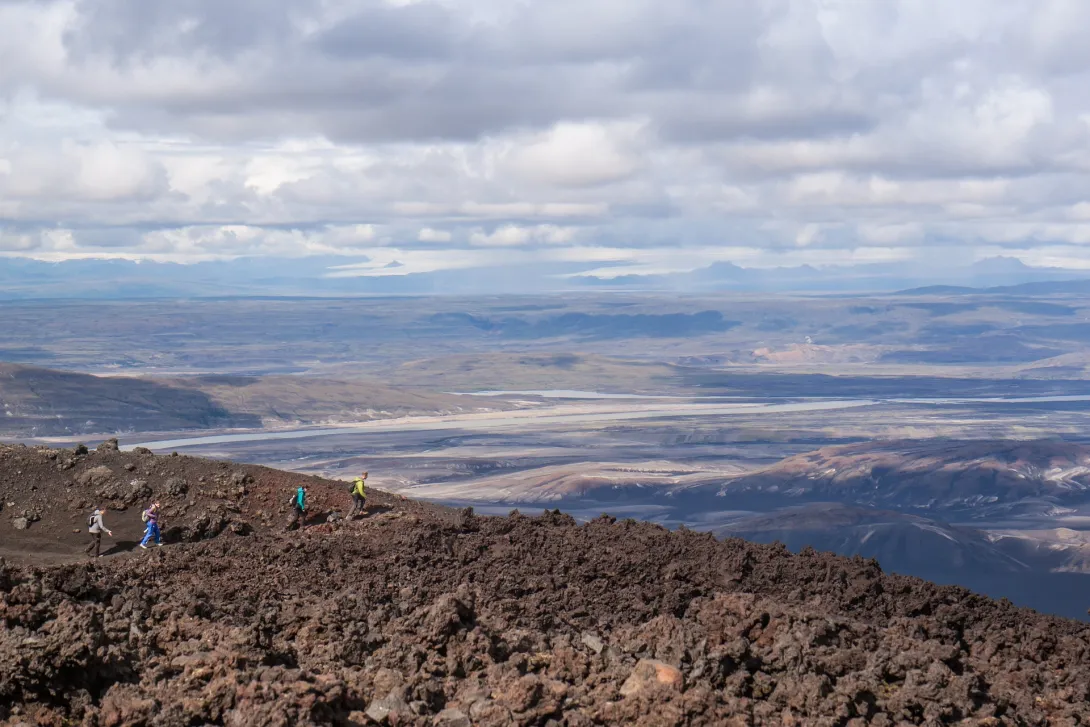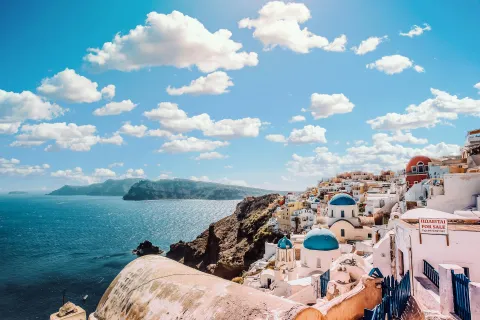Iceland, a land of fire and ice, is a destination like no other. Its unique geographical location and diverse landscapes make it a bucket-list destination for many travelers.
But when is the best time of year to visit Iceland?
The answer depends on what you want to experience. From the Midnight Sun of summer to the Northern Lights of winter, each season offers something special.
This guide will help you decide the best time to visit Iceland based on your interests. Whether you're a nature lover, adventure seeker, or a fan of the Blue Lagoon, we've got you covered.
So, let's dive in and explore the wonders of Iceland, season by season.
Understanding Iceland's Seasons
Iceland experiences four distinct seasons, each offering unique opportunities and weather conditions. Due to its proximity to the Arctic Circle, Iceland's climate can be unpredictable, and seasons don't always follow typical patterns.
The summers bring long days and mild temperatures, while winters are known for short daylight hours and chillier weather. Spring and fall serve as transition periods, offering milder temperatures and fewer tourists. Understanding these seasonal shifts is key to planning your ideal Icelandic adventure. The country's natural wonders and outdoor activities are deeply influenced by these seasonal variations.
Summer in Iceland: Midnight Sun and Festivals
Summer in Iceland is truly magical with the arrival of the Midnight Sun. From June to August, the sun barely sets, casting a perpetual golden glow over the landscape. This abundance of daylight allows for extended sightseeing and outdoor activities, making it the peak tourist season.
Visitors can also enjoy a wealth of festivals, music events, and cultural celebrations during this time. Noteworthy events include:
- Secret Solstice Music Festival
- Reykjavik Pride
- The National Day Celebrations on June 17th
These events highlight Iceland's vibrant culture and offer travelers a chance to experience local traditions. Along with these festivities, summer offers access to highland roads, making it an ideal time for road trips and exploring remote areas. However, travelers should be prepared for busier attractions and higher accommodation costs.
Winter in Iceland: Northern Lights and Snowy Landscapes
Winter in Iceland is a wonderland of snow and ice, attracting visitors eager to experience its unique allure. Between November and February, the country transforms into a serene, white landscape, perfect for winter sports and scenic views. The short daylight hours, however, also create the perfect backdrop for the Northern Lights.
The following activities are winter highlights:
- Northern Lights Tours
- Ice Caving and Glacier Tours
- Winter Sports like Skiing
These adventures immerse visitors in Iceland's frosty beauty, offering once-in-a-lifetime experiences. Though winter weather can be harsh and unpredictable, the opportunity to see the Aurora Borealis is often worth the trip. Be prepared for shorter days and potential travel disruptions, but also for stunning, snowy panoramas.
Spring and Fall: The Shoulder Seasons
Spring and fall in Iceland are known as the shoulder seasons, offering travelers a more tranquil experience. From April to May and September to October, these months see fewer tourists and more affordable prices. The landscapes burst with color as nature awakens in spring, while fall displays spectacular autumn hues.
These seasons are ideal for:
- Avoiding Crowds
- Budget Travel
- Experiencing Local Culture
Weather can be unpredictable, with rain showers and brisk winds, but also opportunities for outdoor exploration. Travelers can enjoy the vibrant culture of Iceland during these quieter months, experiencing local life more intimately. The shoulder seasons provide a peaceful balance between the extremes of summer and winter, making them an attractive option for those seeking a unique and peaceful getaway.
Best Time to Visit Iceland for Specific Activities
Whale Watching and Puffin Spotting
Whale watching in Iceland is a popular activity, best enjoyed between April and October. During these months, the waters teem with life, offering spectacular sightings. The peak occurs in June and July, when diverse species are prevalent.
Puffin spotting is another delight, occurring from May to August. These charming birds nest along Iceland’s cliffs, creating a fascinating spectacle. Whether traveling on a boat tour or exploring coastal areas, visitors will be captivated by both marine giants and playful puffins.
Hiking and Exploring the Highlands
Hiking enthusiasts will find the best trails accessible from June through September. The summer months offer ideal conditions for navigating Iceland's varied terrain. With longer daylight hours, hikers can explore more of the stunning landscapes.
The highland roads, known as F-roads, open during this time, revealing remote and rugged beauty. Adventurous souls can venture into less-trodden paths and discover the solitude of Iceland's dramatic highlands, offering unforgettable escapades.
Hot Springs and the Blue Lagoon
Year-round, Iceland’s geothermal hot springs offer relaxation amidst stunning nature. However, summer months bring warmer temperatures and longer days, enhancing outdoor activities around hot springs.
The Blue Lagoon remains a top attraction throughout the year. It provides a magical contrast to the icy winter air, creating an enchanting experience. Booking in advance is advisable, as this popular spot sees many visitors, particularly during peak seasons and weekends.
Festivals and Cultural Events
Summer marks a vibrant time for festivals and cultural events in Iceland. Events like the Secret Solstice and Reykjavik Pride fill the calendar with lively celebrations. Music, art, and local culture abound, drawing international visitors.
Winter also hosts notable events, such as the Food and Fun Festival in March. Whether it's summer revelry or cozy winter gatherings, Iceland's cultural scene offers something for every traveler, providing insights into the nation's spirit and traditions.
When to Visit for the Best Value
For budget-conscious travelers, the shoulder seasons of spring and fall present the best value. During these months, accommodation and flight prices tend to be lower than in peak summer.
Fewer tourists mean that sites and attractions are less crowded, allowing for a more intimate experience. These seasons also offer a chance to witness Iceland’s beautiful transitions, with fewer people jostling for the perfect photo opportunity.
Planning Your Visit: Weather and Daylight Considerations
Iceland's weather is famously unpredictable, requiring travelers to be versatile in their preparations. Layered clothing is vital, as conditions can shift from sunshine to rain swiftly.
Daylight hours vary greatly across seasons, influencing what you can fit into a day. Summer offers almost endless sunshine, while winter days are brief. This variation affects sightseeing, so plan according to the daylight available during your visit.
Tips for Visiting the Blue Lagoon
The Blue Lagoon is a top attraction in Iceland, open throughout the year. However, experiences differ by season, with each offering its unique charm.
For a quieter experience, consider visiting during off-peak hours. Booking in advance is essential due to its popularity, particularly in summer when crowds swell. The contrast of warm waters against a snowy winter landscape is especially magical.
Conclusion: Your Ideal Time to Visit Iceland
Iceland offers something special every season. Your ideal visit depends on personal preferences and interests. Whether chasing the Northern Lights, enjoying summer festivals, or exploring during quiet shoulder seasons, Iceland's diverse offerings ensure a rewarding adventure for every traveler. Plan carefully, and Iceland will exceed your expectations.



